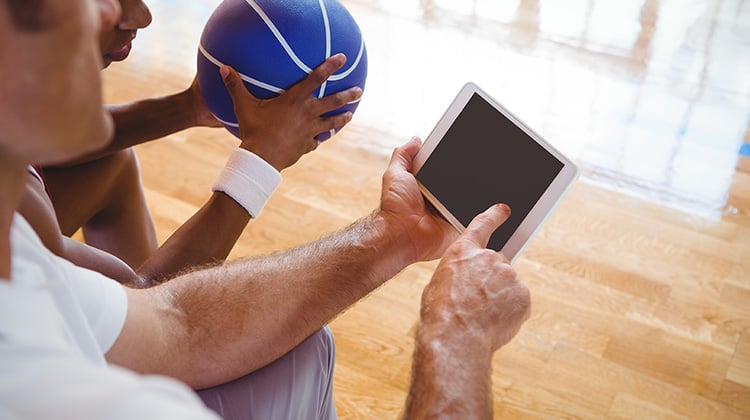A concussion is an injury to the brain that results in temporary loss of normal brain function according to the American Association of Neurological Surgeons. The formal medical definition of concussion is a clinical syndrome characterized by immediate and transient alteration in brain function, including alteration of mental status and level of consciousness, resulting from mechanical force or trauma. According to CDC estimates, 1.6 – 3.8 million sports and recreation related concussions occur each year in the U.S. and 10 percent of all contact sport athletes sustain concussions yearly, often resulting in emergency room visits.
In the event of a sport-related concussion incident in a school setting, coaches and Certified Athletic Trainers (ATC) are typically the initial first responders. An ATC is responsible for preventing and evaluating injuries and providing first-aid care to injured athletes on the field. Many coaches and ATCs work with healthcare professionals to effectively obtain an initial diagnosis and manage the various stages of recovery from concussion, including compliance with return-to-play (RTP) guidance.
Although employment of athletic trainers is projected to grow 23 percent from 2016 to 2026 according to the US Department of Labor’s Bureau of Labor Statistics, many schools do not have the budget to hire an ATC and may contract an ATC from local physical therapy clinics or hospitals. A study in the Clinical Journal of Sport Medicine noted that youth sport settings in more affluent communities may have higher quality facilities and equipment and are also more likely to employ ATCs, who play a key role in concussion education, recognition, and management. In the case of schools with budget restrictions, a contracted ATC may cover multiple schools and need to prioritize one school event vs. others when events are scheduled concurrently, creating a gap in care. Schools in remote areas also face challenges when hiring or contracting an ATC due to the driving distances involved. To limit variable implementation by community resources, it is critical to explore how available human and financial resources can be best leveraged to support concussion management. As a result, schools are embracing the use of technology – namely, a virtual care communication platform – in facilitating remote diagnosis and/or treatment of patients.
Schools, ATCs, and coaches can use a virtual care communication platform to connect with health care providers who can more accurately detect a concussion in real-time. Using a virtual care communication platform to liaise with specialists is also beneficial in rural areas where a neurologist might not be readily available or even staffed at the nearest hospital. With a virtual care platform, the patients can receive a diagnosis on-demand via video. Benefits include reduced diagnosis time, ER visits, follow-up appointments, and travel time/costs for the patients and their parents. By being able to use their everyday devices (e.g., smartphones and tablets) to access care, patients are more engaged in their role in concussion management. Utilizing virtual visits can save valuable and critical time for both the patient and the busy parent. The platform can also push text messages, SMS, or emails which reinforce appropriate lifestyle modifications, appointment updates, and medication reminders.
With the innovative yet easy-to-use technology, ATCs and coaches can connect with neurologists and experienced providers to manage concussions, make removal from play decisions, and close access gaps by providing all young athletes with concussion care on the same level as the care which professional athletes.

